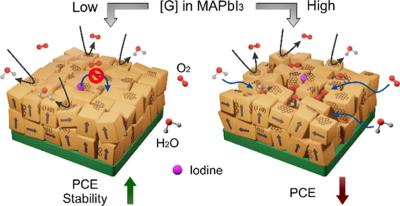Metastable Dion-Jacobson 2D structure could be the basis for perovskite solar cells with improved stability and efficiency
Researchers at the National Renewable Energy Laboratory (NREL), along with collaborators from the SLAC National Accelerator Laboratory, University of Toledo, Princeton University, University of Arizona, University of Kentucky, and University of Colorado, have found away to improve the efficiency of perovskite solar cells by as much as 16%.
The effort involved combining a two-dimensional (2D) perovskite layer with a three-dimensional (3D) perovskite layer, which yielded a solar cell with improvements in both efficiency and stability.






